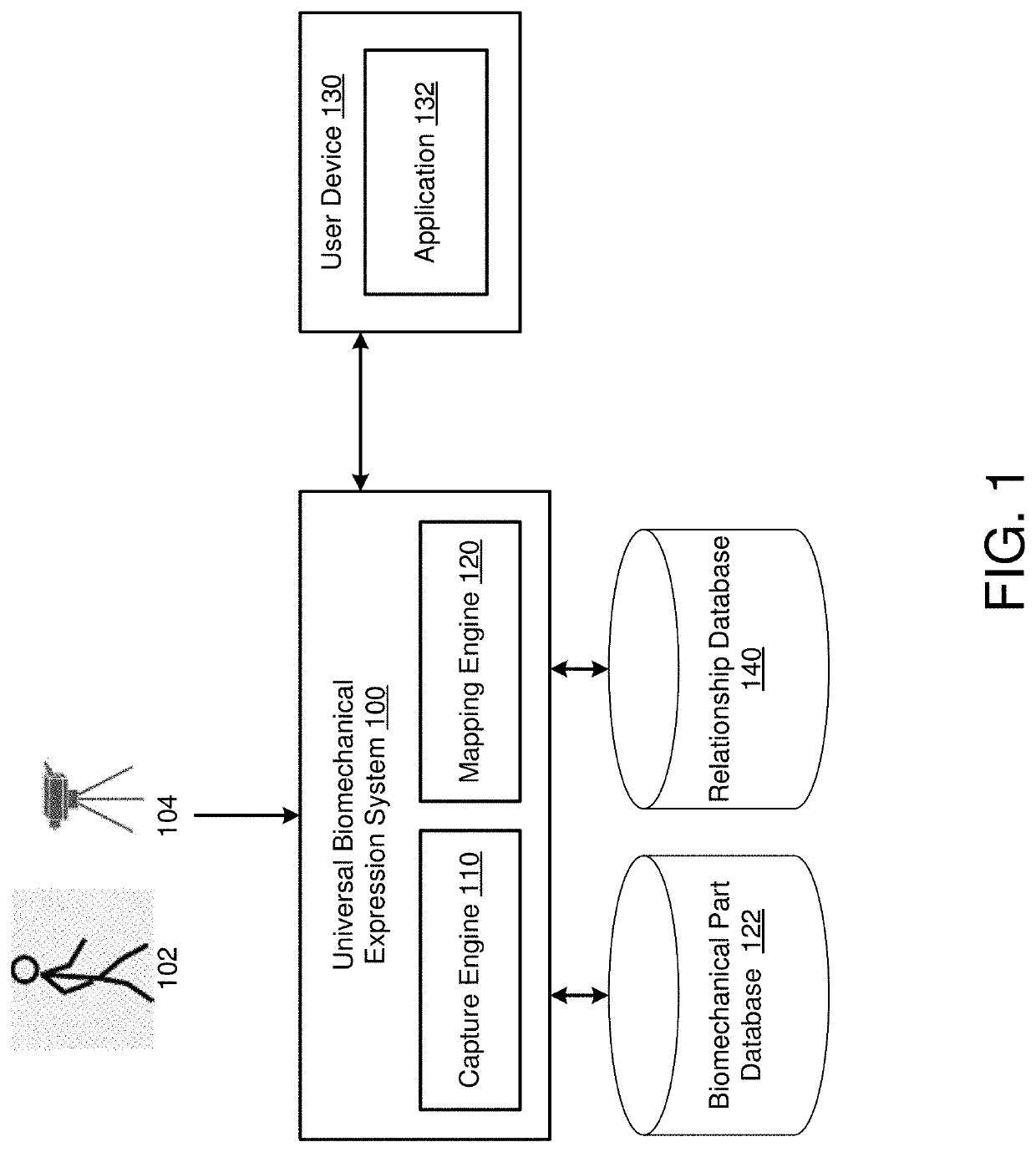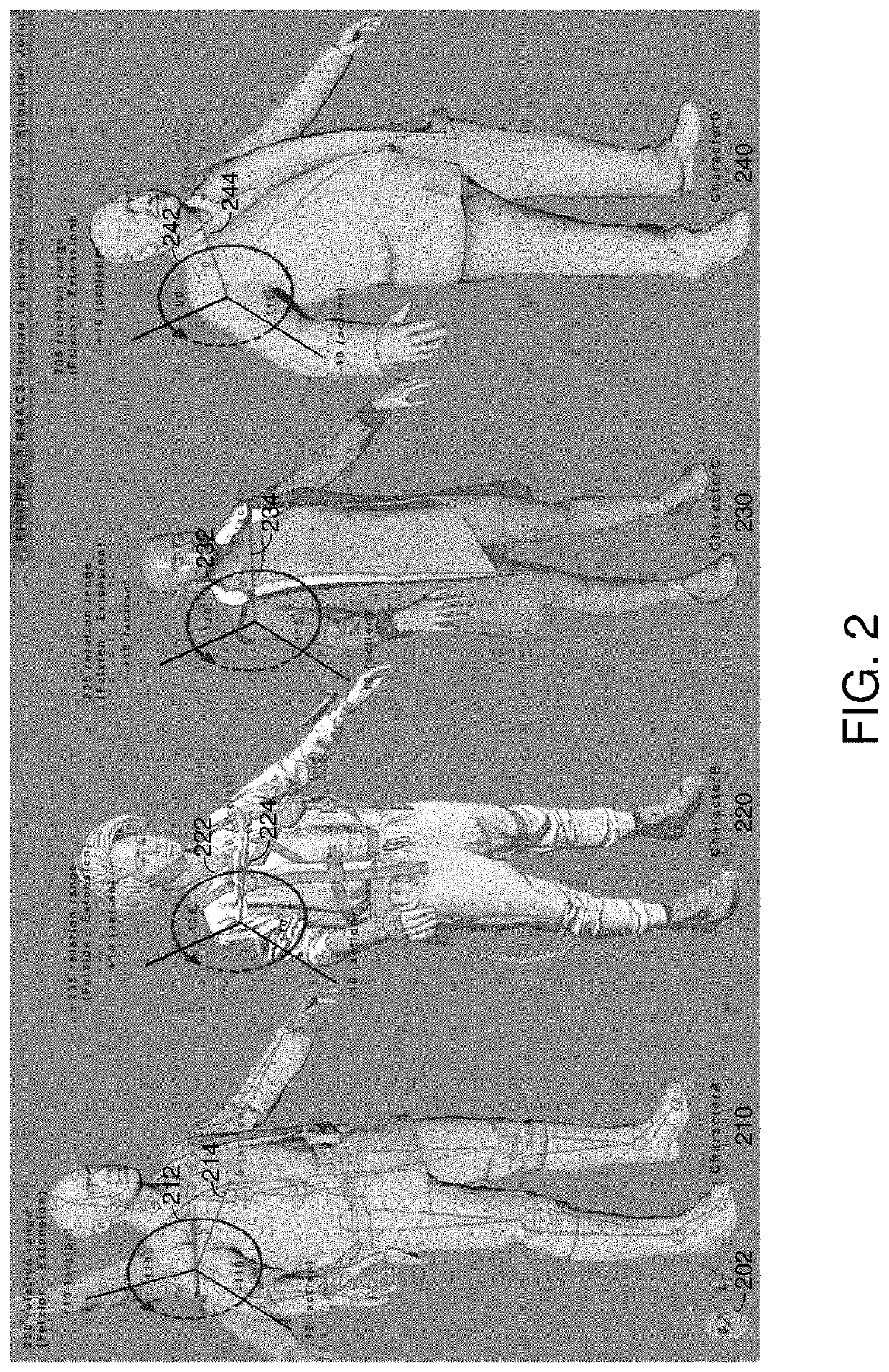Universal body movement translation and character rendering system
a body movement and character rendering technology, applied in the field of computer technology, can solve the problems of loss of data and fidelity of animation, large amount of work, and high computational cost of animation process, and achieve the effects of less storage space, flexibility, speed and efficiency, and improved computer function
- Summary
- Abstract
- Description
- Claims
- Application Information
AI Technical Summary
Benefits of technology
Problems solved by technology
Method used
Image
Examples
Embodiment Construction
[0039]This specification describes systems and methods for utilizing universal languages for action codes, that can be used to specify poses, full-body poses, and expressions (e.g., animation) that can be applied to three-dimensional character models of different animated characters (e.g., animated characters in video games, films, and so on). For example, an animator can specify a particular collection of action codes according to a universal language, and different animated character models can automatically update to present the particular pose associated with those action codes. A series of these collections of action codes can be used in sequence in order to obtain expressions and more complex animation. Furthermore, these universal action codes may allow complex animation for a target character to be quickly generated based on motion data associated with a source character, by translating the motion data into action codes that can be then applied to the target character.
[0040]...
PUM
 Login to View More
Login to View More Abstract
Description
Claims
Application Information
 Login to View More
Login to View More - R&D
- Intellectual Property
- Life Sciences
- Materials
- Tech Scout
- Unparalleled Data Quality
- Higher Quality Content
- 60% Fewer Hallucinations
Browse by: Latest US Patents, China's latest patents, Technical Efficacy Thesaurus, Application Domain, Technology Topic, Popular Technical Reports.
© 2025 PatSnap. All rights reserved.Legal|Privacy policy|Modern Slavery Act Transparency Statement|Sitemap|About US| Contact US: help@patsnap.com



